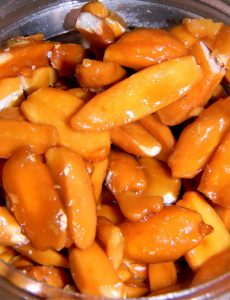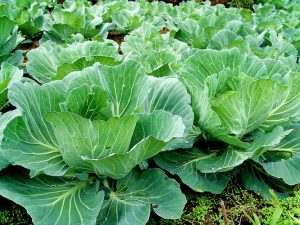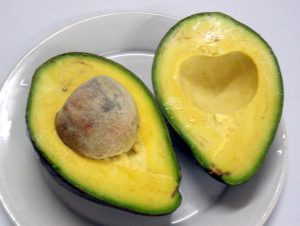“Tell them dear, that if eyes were made for seeing,
Then beauty is its own excuse for being.”
– From “The Rhodora” by Ralph Waldo Emerson
Ever heard of the “fountain of youth”? It is a legendary spring that reputedly restores the youth of anyone who drinks or bathes in its waters. Tales of such a fountain have been recounted across the world for thousands of years, appearing in writings by Herodotus, the Alexander romance, and the stories of Prester John. Stories of similar waters were also evidently prominent among the indigenous peoples of the Caribbean during the Age of Exploration, who spoke of the restorative powers of the water in the mythical land of Bimini.
Whether the “fountain of youth” is true or not, the fact remains that water is one open that can make a person younger – and more beautiful. Next to air, water is the element most necessary for survival. Water makes up more than 60 percent of our body weight. In comparison, proteins make up only 18% while fats encompass 15%, minerals 4%, carbohydrates 2% and vitamins less than one percent.
Our brain contains 74% water, blood contains 83% water, lean muscle has 75% water and bone has 22% water. A lack of water affects everything from your digestive tract to your immune system. It also helps regulate your body temperature.
A person needs at least 24 liters of water daily or one liter per hour. Dr. Willie T. Ong, an internist-cardiologist, considers water as one of the 10 foods that can make a person more beautiful. “Just as a dehydrated person will have deep-set eyes and wrinkled skin, so will a fully hydrated person exhibit a normal and firm skin tone,” Dr. Ong explains.
The recipient of the Outstanding Filipino Award given by the Department of Health suggests that a person drinks 8-10 glasses of clean water every day. “Drinking lots of water,” he says, “will help flush out toxins from your body.”
In his book, “Stay Younger, Live Healthier,” which he co-authored with his wife, Dr. Liza Ong, he also recommends drinking green tea. Quoting studies done by Dr. Michael Roizon and Dr. Mehmet Oz, he says green tea contains polyphenols that may prevent sunlight damage and improve the elasticity of the skin’s outer layer. “Studies show that green tea may prevent various cancers, including skin cancer, because of the high concentration of catechins,” he says, adding that a person should drink one to two glasses of green tea each day.
Dr. Ong also endorses milk and its by-products. “Low-fat milk products are good for your heart, bones and skin,” he says. Cottage cheese contains calcium, phosphorus, iron, magnesium, and selenium. The latter is a potent antioxidant, which can help promote a more beautiful skin. “But don’t eat too much cottage cheese because they can be fatty, too,” he warns.

Nuts – like pili, cashew, and peanuts – are also highly recommended. “The rich oil in nuts helps moisturize the skin while its vitamin E component may protect your skin from damage and premature aging,” Dr. Ong explains.
Dr. Ong considers nuts as “nutritional powerfoods” as they are packed in protein, minerals, and fats. “Yes, they’re fatty but don’t worry,” Dr. Ong says. “The fats founds in nuts are the good fats – monounsaturated and polyunsaturated.”
Peanuts and cashews nuts are good but if you can buy the more expensive walnuts and almonds it would be good as they “are specially packed with healthy oils.” Word of warning: “Some nuts are salty and high in uric acid. So, just eat a handful as a snack.”
What about soybeans? “(They) contain proteins, which breaks down into smaller amino acids upon digestion,” Dr. Ong says. “The amino acids, in turn, help repair the skin cells and collagen beneath the skin. In addition, soybeans contain essential fatty acid that helps moisturize your skin naturally.”
Soybeans are also rich in calcium, iron, zinc, and magnesium, B vitamins, omega-3 fatty acids and fiber. “Hence, they’re good for your heart, bones, and digestion,” Dr. Ong says. “You can add soybeans in your diet by drinking soya milk or adding tofu to your soups, stews, and salads.”
Speaking of omega-3 fatty acids, you can also get them from oily fish. Endorsed by the American Heart Association, oily fish like sardines, tuna, mackerel and salmon, are filled with healthy omega-3 fatty acids – a type of fat that makes your blood less likely to form clots.
Salmon, in particular, contains astaxanthin, which is a carotenoid that improves skin elasticity. A 2005 study in the “Journal of Lipid Research” shows that fish oil can limit skin damage caused by the sun’s ultraviolet rays. Fish oil may also alleviate condition such as psoriasis, eczema, and dry and flaky skin. To get the full health benefit, fresh oil fish is better than canned fish where omega-3 levels are reduced.

Vegetables are the world’s most natural foods,” says Dr. Ong. “Vegetables contain vitamins, minerals, and thousands of other plant chemicals known to provide health benefits. Lettuce, cabbage, spinach, and broccoli are all very healthy. Green leafy vegetables contain varying amounts of fiber, potassium, calcium, folate, iron and vitamins A, B, and C.”
One of the most affordable green leafy vegetable is malunggay. Nutritionists aver that 100 grams of malunggay leaves yield the following: 75 calories of energy (higher than ampalaya, squash, tomatoes, or carrots), 5.9 grams protein (higher than cauliflower, lettuce, or mustard), 12.8 grams carbohydrate (higher than okra, papaya, or watermelon), 353 milligrams calcium (higher than gabi leaves, mung beans, squash, and camote tops), 3.7 milligrams niacin (higher than other vegetables analyzed). And for thiamin, phosphorus, and ascorbic acid, malunggay is at the top of the list.
Although considered a fruit in some countries, tomato is still a vegetable in the Philippines. A German study finds that tomato paste with olive oil helps participants prevent sunburn within ten weeks of taking it.
“Tomatoes are extremely high in antioxidants, especially carotenoids like beta-carotene and lycopene,” Dr. Ong says. Studies show that lycopene may help slow down cellular damage from free radicals. Lycopene is readily released by cooking tomatoes and better absorbed with a little oil added.

Dr. Ong recommends three fruits that can make your more beautiful: avocado and watermelon.
On avocados, the noted doctor wrote: “Avocados are packed with the B vitamins, which help nourish your skin. Vitamin B3 (called niacin) acts as an anti-inflammatory agent and may help smoothen reddish and patch skin. One avocado contains 3.8 milligrams of niacin, which fulfills 27 percent of your daily needs.”
As for watermelon, its beneficial effect comes from it component citrulline, which is converted to arginine in the body. “Arginine helps flush out ammonia and other toxins from the body,”
According to Dr. Ong, you need to select the deep-red watermelon as it contains the pigment lycopene, which helps counter the bad effects of free radicals circulating in the body. “Once we reduce these free radicals, we can theoretically slow down aging and gain a healthier-looking skin.”
In the long run, just remember the words of Martin Buxbaum: “Some people, no matter how old they get, never lose their beauty – they merely move it from their faces into their hearts.”







